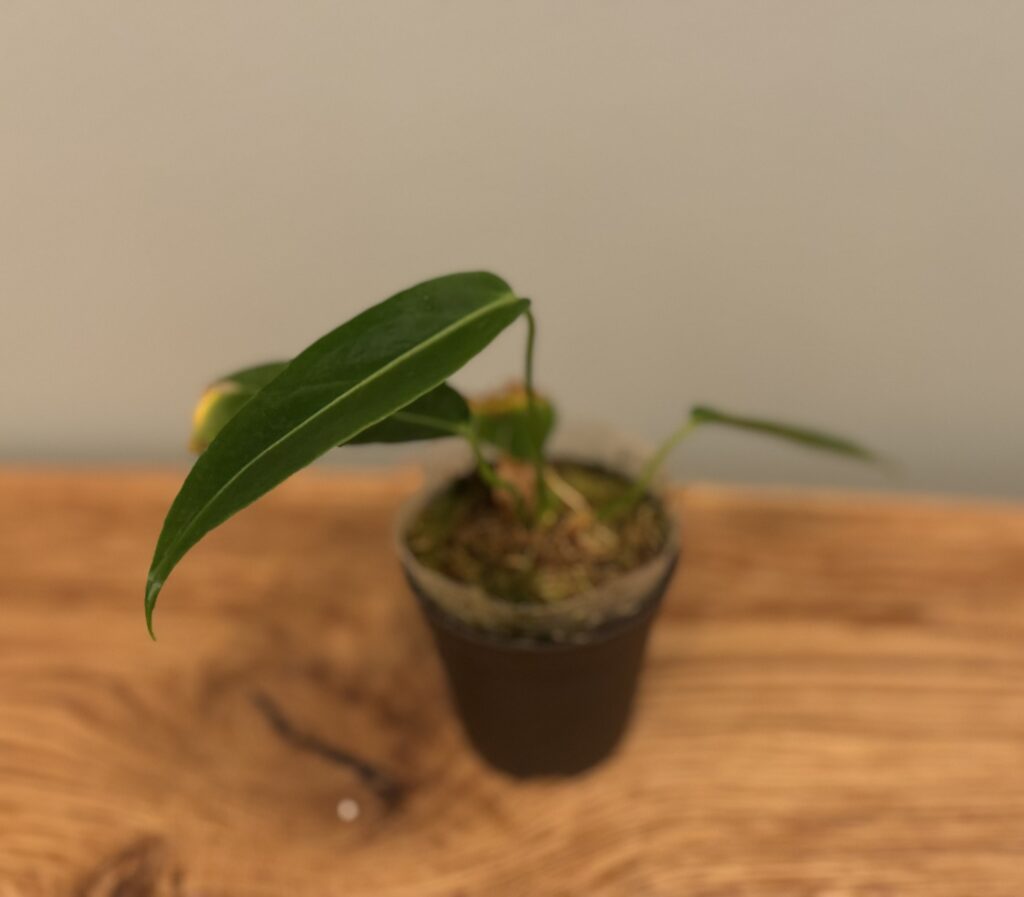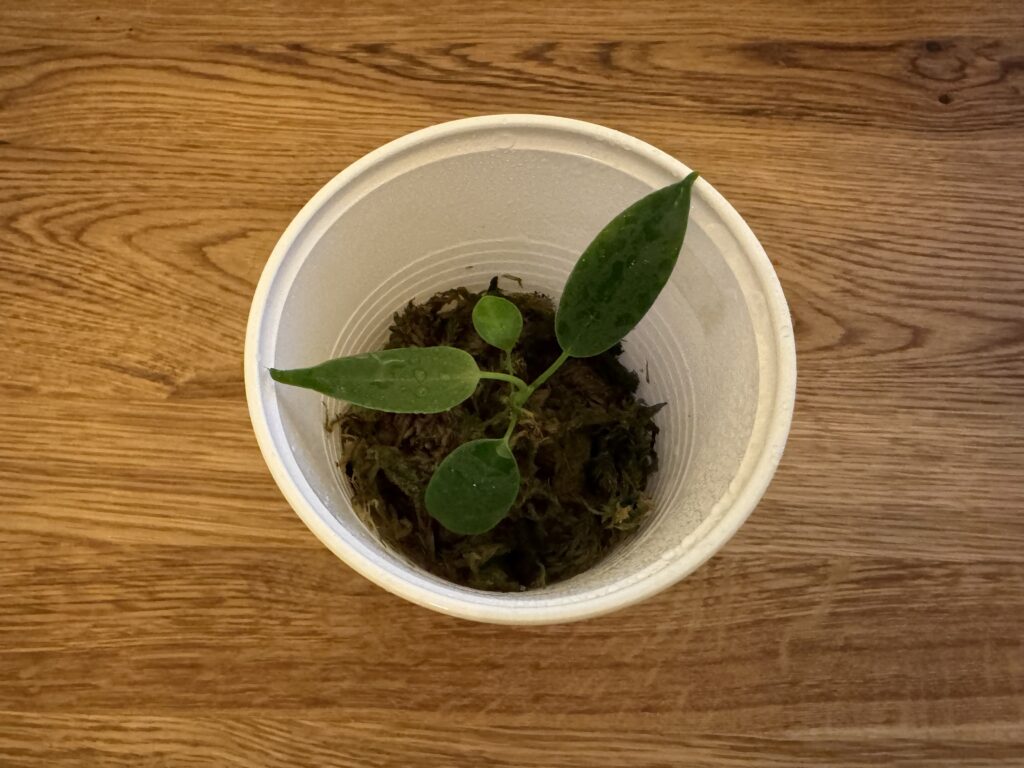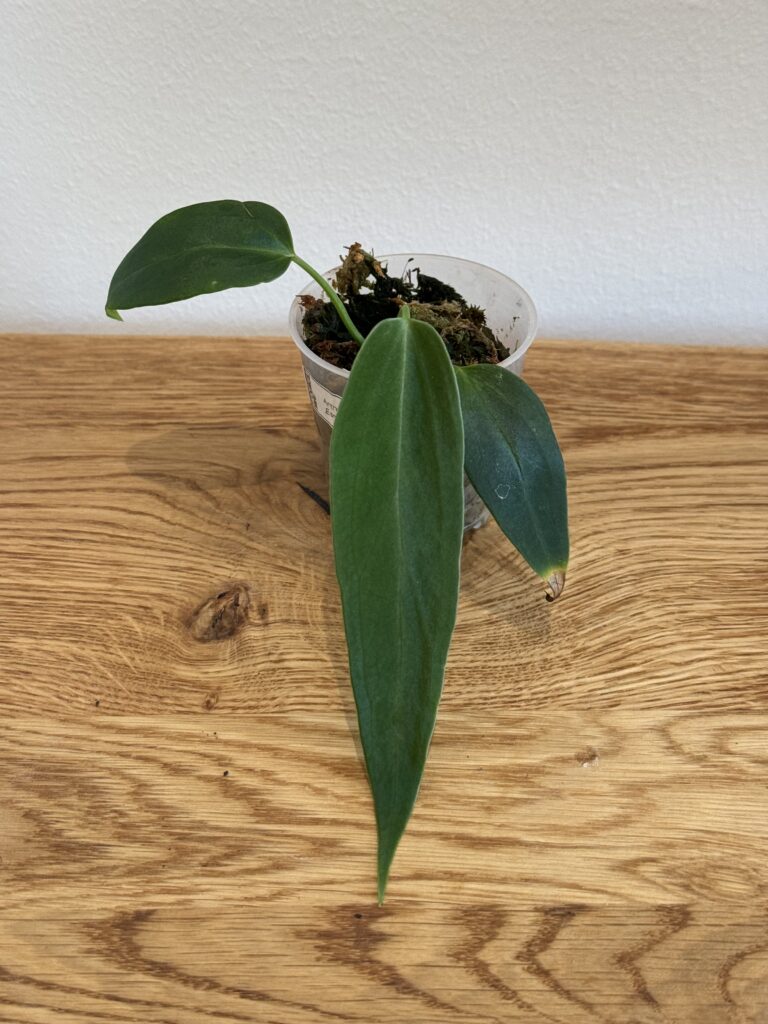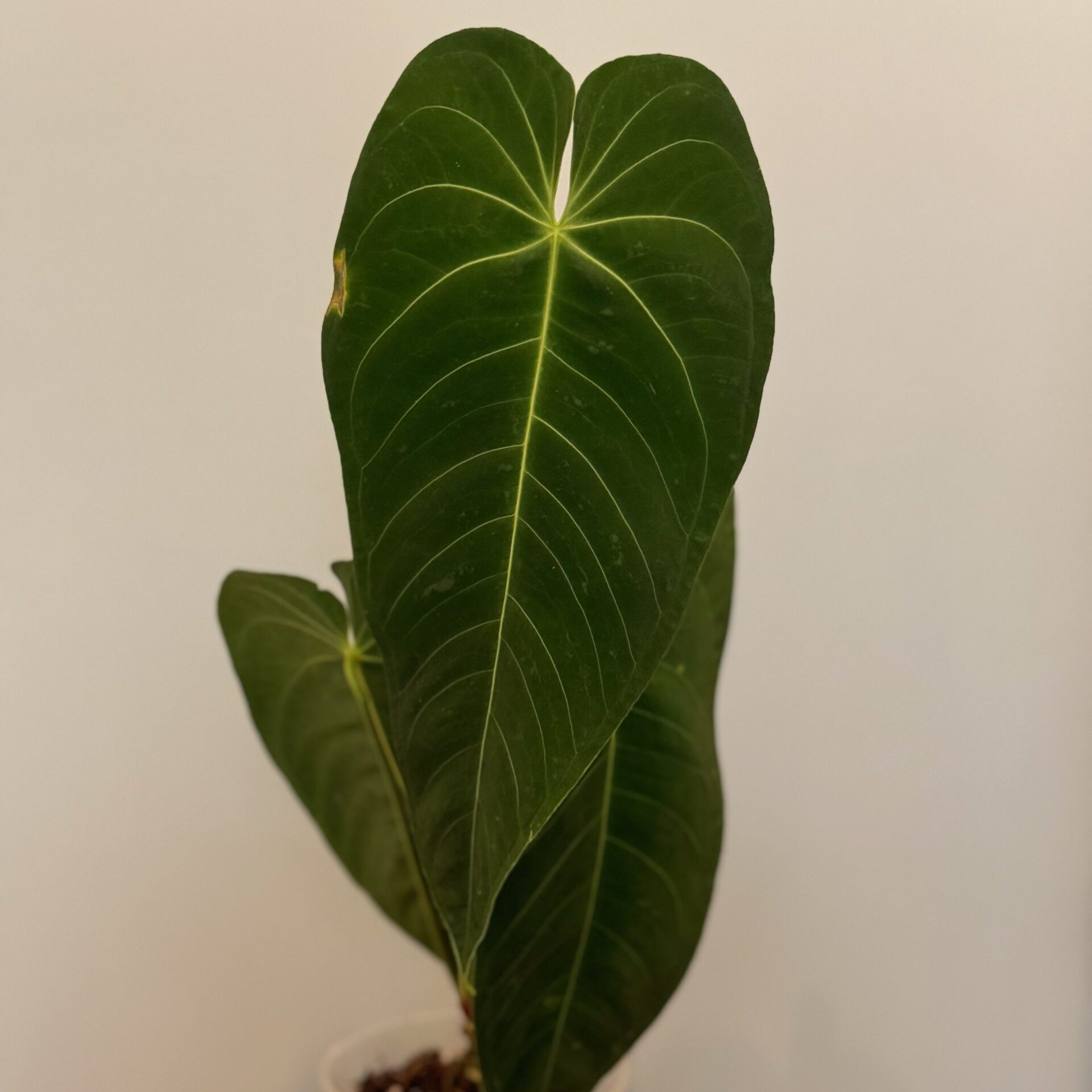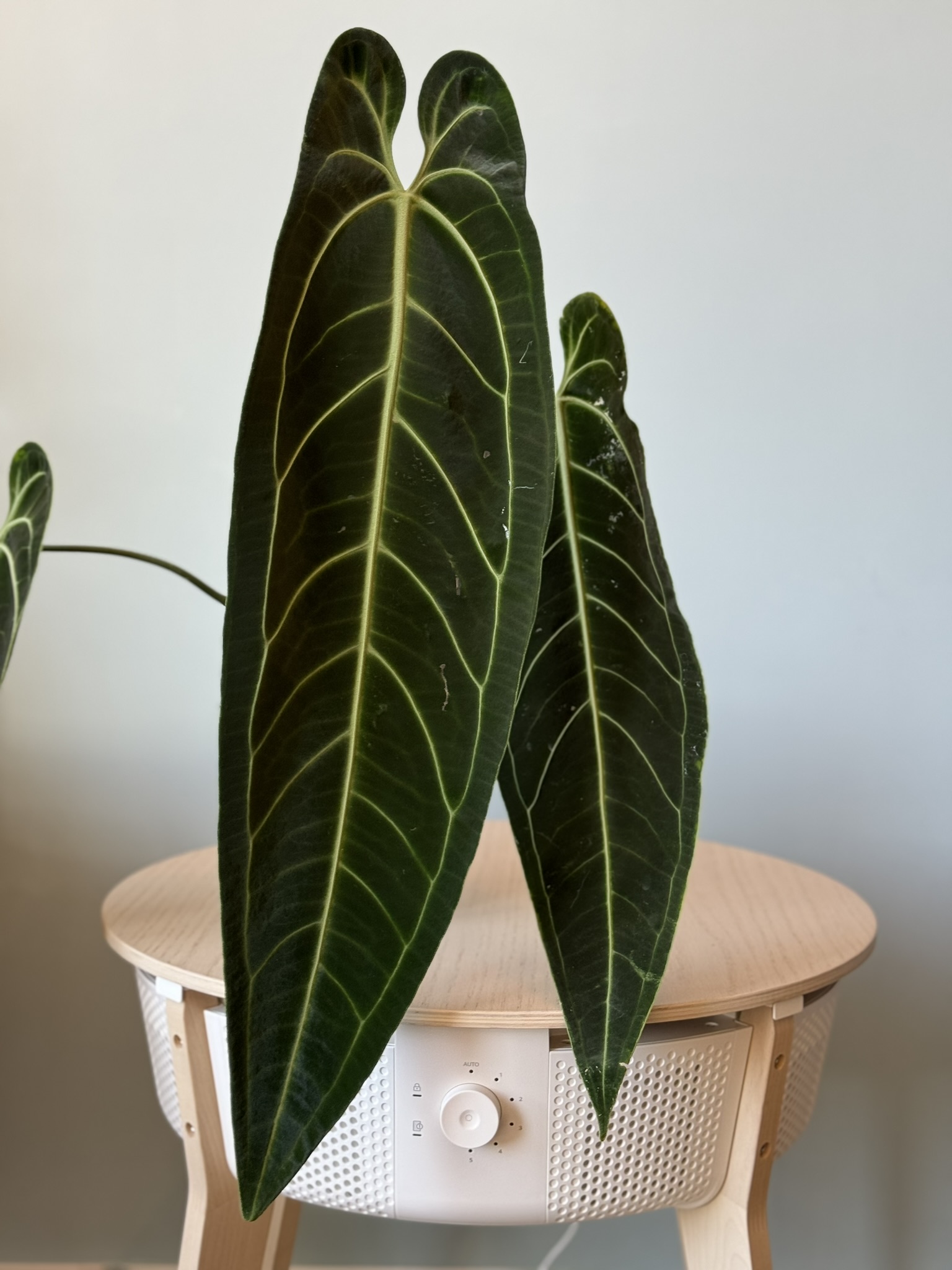One of the most iconic species of Anthurium is undoubtedly the queen of Anthuriums: the Warocqueanum. With its long, tapering, and often dark leaves, especially adult specimens know how to make a grand impression.
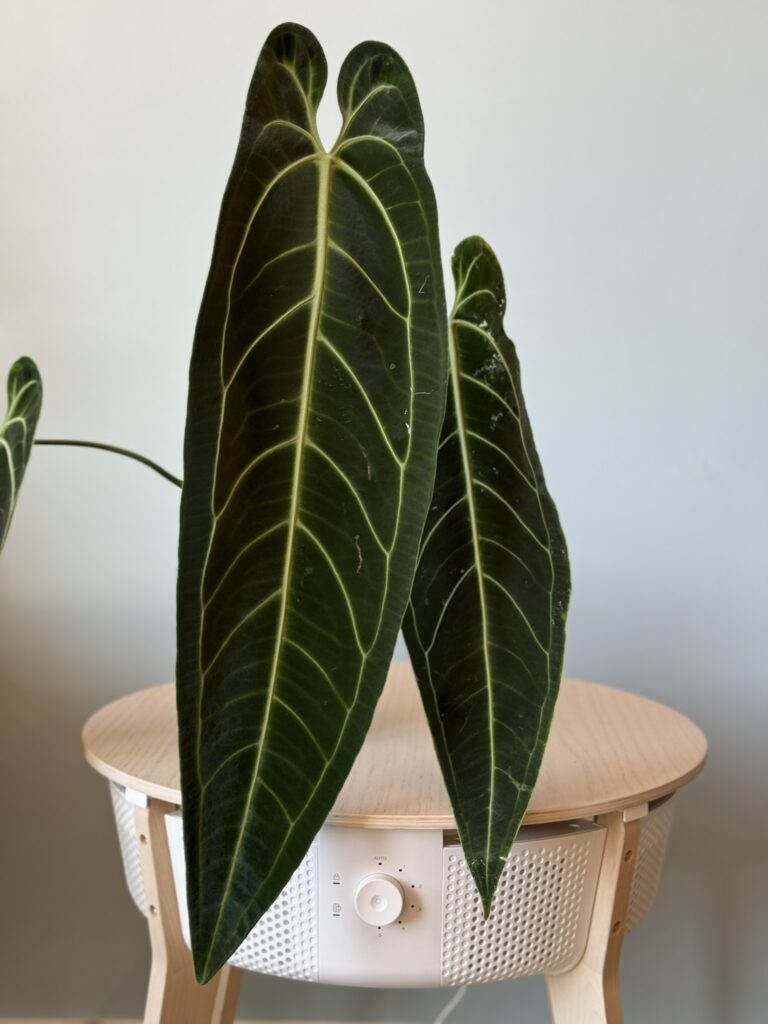
Caring for the Warocqueanum
Our queen hails from the rainforests of Colombia and naturally occurs in both the humid lowlands and highlands. This relatively broad range of altitudes makes it somewhat less demanding compared to other members of its kind. With proper care, it is undemanding and can tolerate occasional dry stress, as long as there is no new leaf or bloom on the way. It requires slightly higher humidity than other Anthuriums.
Despite its thick and robust-looking leaves, you should maintain a constant humidity level of over 50%. Otherwise, it can quickly suffer cosmetic leaf damage. Generally, the plant needs more time than usual to adjust to new conditions, so these should be kept relatively constant.
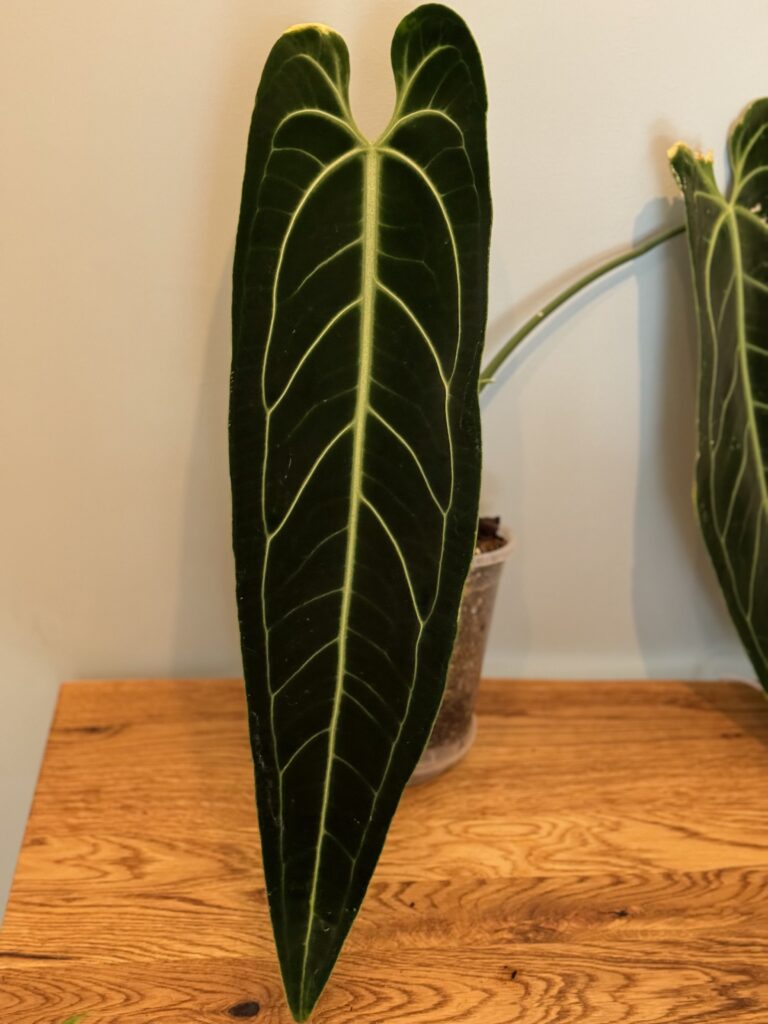
Regarding substrate, the Warocqueanum does not have extraordinary requirements for Anthuriums and can be easily kept in semi-hydroponics. As with all Anthuriums, you should use high-quality, airy substrate.
Personal Experience
Since I acquired my Warocqueanum, it has been kept under artificial light in a terrarium with humidity usually between 60 and 70%. I have had no problems with root rot or pests, even when other plants in the terrarium were affected. When the humidity dropped too much, there was often leaf damage.
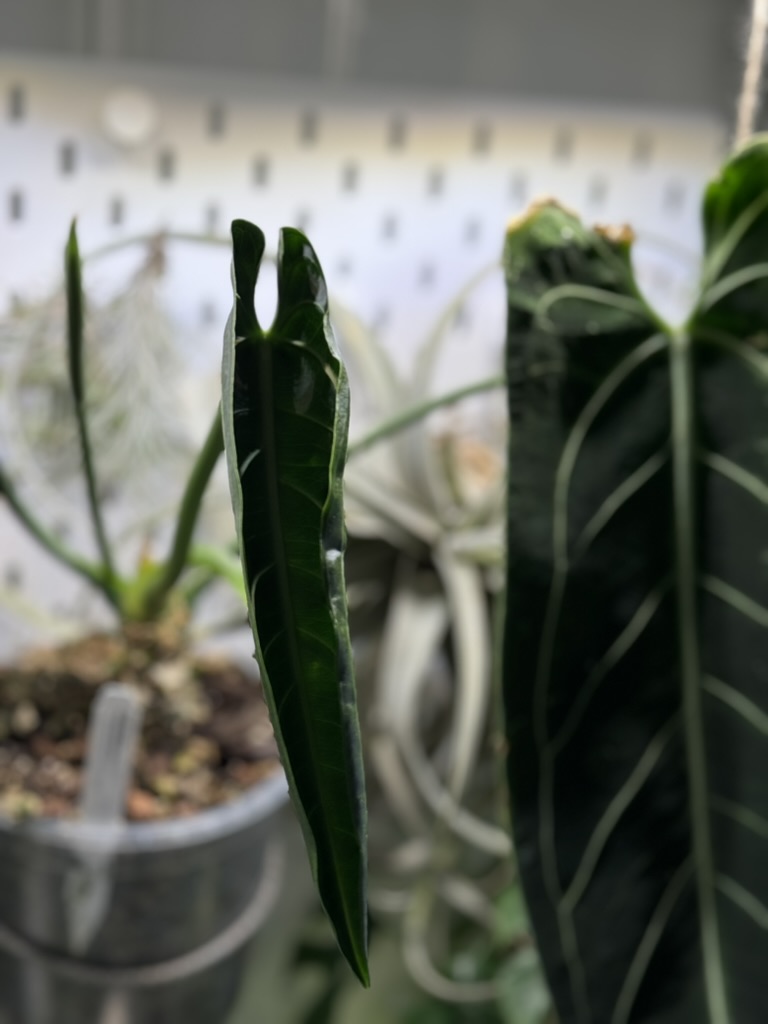
Most of my Anthuriums grow faster, but they usually produce smaller leaves. Over time, the Warocqueanum lives up to its name and rules the terrarium with its enormous leaves. It can’t grow much larger due to space constraints.
Once the leaves of my plant reached a size of about 40cm, it slowly started to bloom. Since I wanted to avoid the stress of seeds and flowers, and because the new leaf was more important to me, I usually removed the flowers or just collected the pollen.
Hybrids
Fortunately, the Warocqueanum belongs to the large section Cardiolonchium and thus has many potential hybrids. I don’t have larger specimens yet, but I do have a few candidates with potential.
